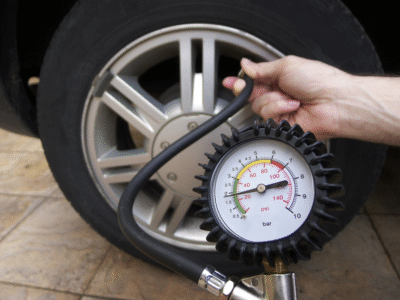
Nissan Juke Clutch Replacement: Complete Guide for 1.5 dCi Models

Replacing the clutch on a Nissan Juke 1.5 dCi is a demanding yet essential task that restores driving comfort, performance, and reliability. In this comprehensive guide, we walk through the entire clutch replacement process, including tools, torque specifications, best practices, and expert recommendations to ensure a flawless installation.
- 1. Overview of the Nissan Juke 1.5 dCi Clutch System
- 2. Symptoms of a Worn or Failing Clutch
- 3. Preparation and Safety Checklist
- 4. Required Tools and Equipment
- 5. Estimated Labour Time
- 6. Gearbox Removal Procedure
- 7. Clutch and Dual Mass Flywheel (DMF) Replacement
- 8. Gearbox Installation Process
- 9. Hydraulic System Bleeding
- 10. Final Checks and Test Drive
- 11. Common Mistakes to Avoid
- 12. Best Practices for Longevity
- 13. Estimated Nissan Juke Clutch Replacement Cost (UK & EU)
- 14. Maintenance Tips After Replacement
- 15. Conclusion
1. Overview of the Nissan Juke 1.5 dCi Clutch System
The Nissan Juke 1.5 dCi (2011–2017) features a dual mass flywheel (DMF) and self-adjusting clutch system. This setup enhances comfort and reduces drivetrain vibration. Over time, the clutch pedal can become excessively heavy due to wear on the clutch disc and diaphragm spring, signalling that a replacement is necessary.
2. Symptoms of a Worn or Failing Clutch
Before proceeding with a replacement, look for these common signs:
You may be interested in reading Nissan Juke Engine Oil Capacity, Type & Change Intervals (2010–2019)
Nissan Juke Engine Oil Capacity, Type & Change Intervals (2010–2019)- Heavy clutch pedal requiring more pressure.
- Clutch slipping when accelerating or towing.
- Difficulty engaging gears, especially reverse or first.
- Vibration or chatter during clutch engagement.
- Burning smell from clutch lining wear.
3. Preparation and Safety Checklist
Before starting:
- Park the vehicle on a flat surface and engage the parking brake.
- Disconnect the battery to prevent electrical damage.
- Confirm you have the locking wheel bolt key.
- Allow the engine to cool completely.
- Wear protective gloves and eyewear.
4. Required Tools and Equipment
| Tool | Description |
|---|---|
| Vehicle lift | Two-post lift preferred |
| Engine support beam | To stabilize the engine |
| Transmission jack | For safe gearbox handling |
| Clutch alignment tool | Ensures precise fit |
| Socket set | Metric sockets for bolts |
| Torque wrench | For manufacturer specs |
| Brake & clutch cleaner | To remove contaminants |
| Drain tray | For gearbox oil |
5. Estimated Labour Time
The manufacturer-scheduled time for this procedure is approximately 4.9 hours for professional workshops using a lift and transmission jack.
6. Gearbox Removal Procedure
- Open the bonnet and remove:
- Engine cover
- Battery and carrier
- Air filter assembly and ducting
- Gear position switch multiplug and gear cables
- Detach the hydraulic clutch pipe from the concentric slave cylinder (CSC) and cap it to prevent fluid loss.
- Raise the vehicle and remove:
- Engine undertray
- Gearbox oil drain plug (allow oil to drain)
- Both front wheels and hub nuts
- Near-side wheel arch liner
- Disconnect:
- Gearbox earth strap
- Wiring loom clips
- Anti-roll bar links and lower ball joints
- Driveshafts
- Steering rack to subframe bolts
- Engine pendulum mount
- Support the engine, remove subframe bolts, and lower the front subframe for clearance.
- From above, remove the gearbox mounting bracket. Support the gearbox, unbolt the bellhousing, and carefully separate the gearbox from the engine.
7. Clutch and Dual Mass Flywheel (DMF) Replacement
Removing the Old Clutch
- Unbolt the nine clutch bolts.
- Remove the pressure plate and friction disc.
- Inspect the clutch lining — if near flush with rivets, replacement is overdue.
Replacing the Dual Mass Flywheel
- Remove six DMF retaining bolts.
- Clean the rear engine face with brake cleaner.
- Install the new LuK RepSet DMF using new bolts.
- Torque the bolts sequentially to manufacturer specifications.
- Degrease the DMF face before installing the new clutch.
Installing the New Clutch Kit
- Apply a light coat of high-temperature grease on the gearbox input shaft splines.
- Align the new clutch disc with a clutch alignment tool (“Gearbox Side” facing outward).
- Fit and torque the pressure plate evenly.
- Remove alignment tool once secured.
8. Gearbox Installation Process
- Ensure alignment dowels are seated correctly.
- Lift the gearbox using a transmission jack and align carefully with the engine.
- Insert and hand-tighten two bellhousing bolts to hold position.
- Refit the gearbox mounting and subframe, reconnect all components in reverse order.
- Fill the gearbox with the correct grade and amount of oil.
9. Hydraulic System Bleeding
The CSC connection uses a two-position bleed system:
You may be interested in reading Nissan Juke Engine Oil Capacity, Type & Change Intervals (2010–2019)
Nissan Juke Engine Oil Capacity, Type & Change Intervals (2010–2019) MG HS Boot Space: The Complete Practicality Review
MG HS Boot Space: The Complete Practicality Review- Position 1: Opens the bleed nipple.
- Position 2: Closes when pushed against gearbox casing.
Bleed using a vacuum bleeding kit to remove trapped air. Replace fluid with new DOT 4 brake fluid to ensure optimal clutch response.
10. Final Checks and Test Drive
After assembly:
- Verify clutch pedal travel and bite point.
- Recheck gearbox oil level.
- Inspect for leaks around CSC and driveshaft seals.
- Conduct a 10–15 minute road test under varied conditions.
11. Common Mistakes to Avoid
- Failing to clean the DMF and pressure plate surface.
- Forgetting to flush old hydraulic fluid.
- Over-torquing clutch bolts.
- Misaligning the gearbox dowels.
- Reusing old flywheel bolts.
12. Best Practices for Longevity
- Always replace DMF and CSC together.
- Avoid resting your foot on the clutch pedal.
- Use OEM-grade clutch kits (LuK, Sachs, Valeo).
- Service gearbox oil every 60,000 miles.
- Perform a clutch fluid flush annually.
13. Estimated Nissan Juke Clutch Replacement Cost (UK & EU)
| Region | Average Cost Range | Includes |
|---|---|---|
| UK (Main Dealer) | £850 – £1,200 | Parts + Labour |
| UK (Independent Garage) | £650 – £900 | Parts + Labour |
| EU Average | €800 – €1,100 | Parts + Labour |
| DIY Parts Only | £300 – £450 | LuK RepSet DMF kit |
Prices vary based on labour rates, region, and part brands. Always verify torque specs and part compatibility by VIN.
You may be interested in reading Nissan Juke Engine Oil Capacity, Type & Change Intervals (2010–2019)
Nissan Juke Engine Oil Capacity, Type & Change Intervals (2010–2019) MG HS Boot Space: The Complete Practicality Review
MG HS Boot Space: The Complete Practicality Review MG HS Tyre Pressure Guide: Recommended Settings, Chart, and Maintenance Tips
MG HS Tyre Pressure Guide: Recommended Settings, Chart, and Maintenance Tips14. Maintenance Tips After Replacement
- Avoid aggressive driving during the first 500 miles.
- Check clutch fluid level weekly for the first month.
- Schedule a post-install inspection to ensure no leaks or loose mounts.
- Keep gearbox and engine mounts in good condition to reduce strain.
15. Conclusion
A Nissan Juke clutch replacement is intricate, requiring precision and proper tools. When executed correctly, it restores the Juke’s responsiveness, reduces pedal effort, and enhances driving smoothness. Following the correct procedure, torque values, and bleeding techniques ensures durability and factory-level performance.
If you want to know other articles similar to Nissan Juke Clutch Replacement: Complete Guide for 1.5 dCi Models you can visit the category Service and Parts.
Deja una respuesta






More content of your interest